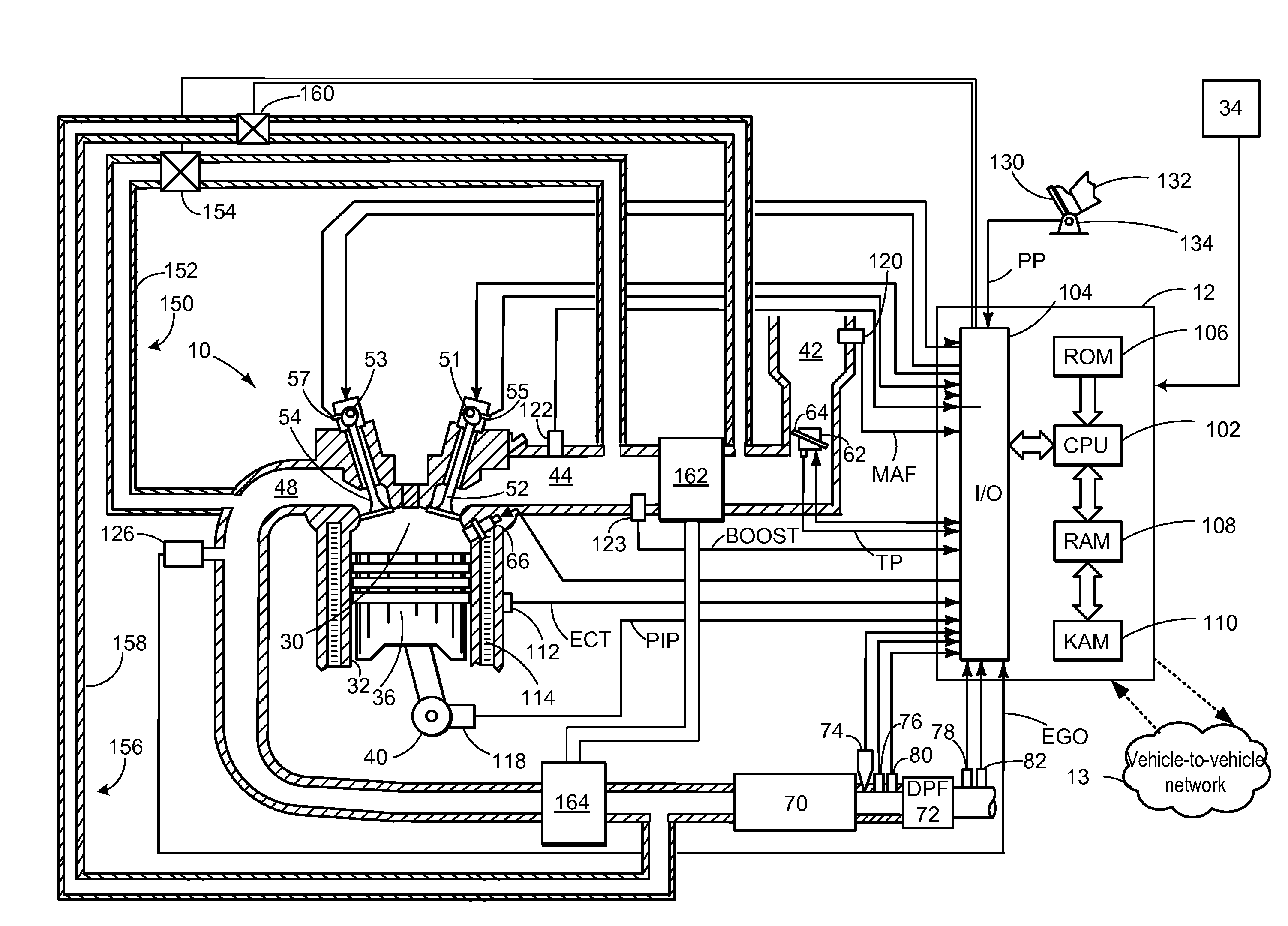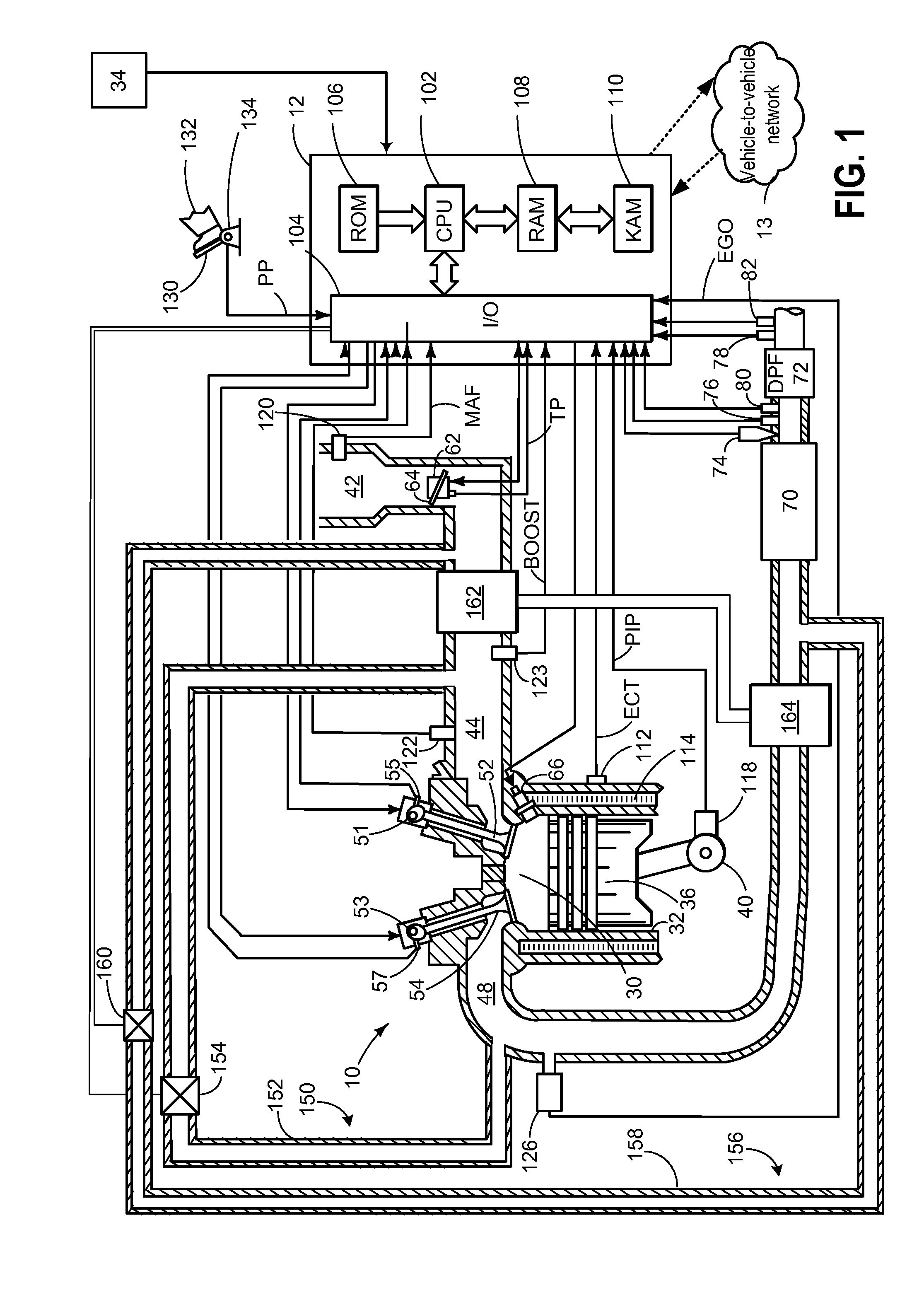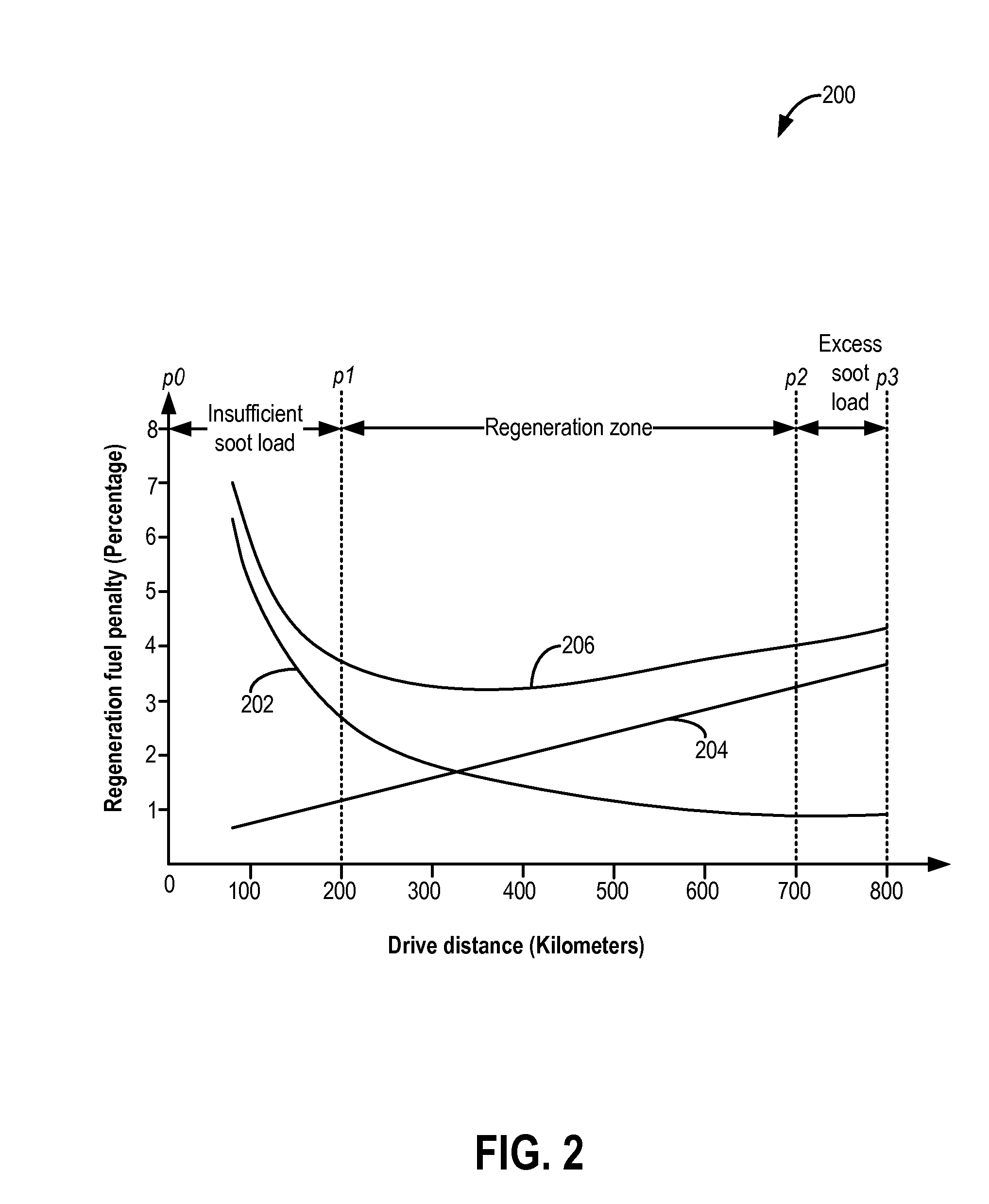Systems and methods for opportunistic diesel particulate filter regeneration
a technology of system and method, applied in the direction of machines/engines, instruments, exhaust treatment, etc., can solve the problems of increasing the regeneration fuel penalty (rfp), frequent premature regeneration termination, and reducing fuel economy, so as to reduce the amount of soot emissions and reduce the amount of trapped particulate matter
- Summary
- Abstract
- Description
- Claims
- Application Information
AI Technical Summary
Benefits of technology
Problems solved by technology
Method used
Image
Examples
Embodiment Construction
[0015]Particulate filter regeneration may occur during operation of a turbocharged engine such as shown in FIG. 1 to decrease the amount of trapped particulate matter. As shown in the example of FIG. 2, the engine may incur a regeneration fuel penalty (RFP) during regeneration. In order to reduce the RFP, may be configured to perform a control routine, such as the routine of FIG. 3 and example method of FIG. 4 to perform opportunistic regeneration based on driver behavior determined based on traffic information from a vehicle-to-vehicle network communicatively coupled to the vehicle and / or navigation information of the vehicle. Example opportunistic regeneration based on vehicle network and navigation information is shown at FIG. 5, and example regeneration impact during various vehicle operating conditions and vehicle network operating conditions is shown at FIG. 6. By utilizing the systems and methods disclosed herein, the technical effect of reducing regeneration fuel penalty and...
PUM
 Login to View More
Login to View More Abstract
Description
Claims
Application Information
 Login to View More
Login to View More - R&D
- Intellectual Property
- Life Sciences
- Materials
- Tech Scout
- Unparalleled Data Quality
- Higher Quality Content
- 60% Fewer Hallucinations
Browse by: Latest US Patents, China's latest patents, Technical Efficacy Thesaurus, Application Domain, Technology Topic, Popular Technical Reports.
© 2025 PatSnap. All rights reserved.Legal|Privacy policy|Modern Slavery Act Transparency Statement|Sitemap|About US| Contact US: help@patsnap.com



